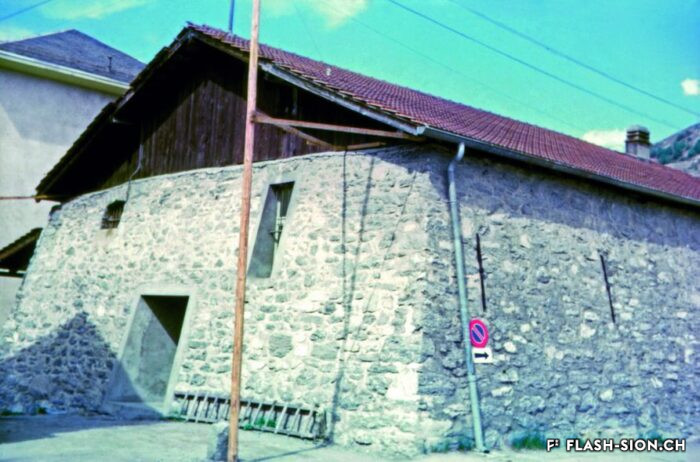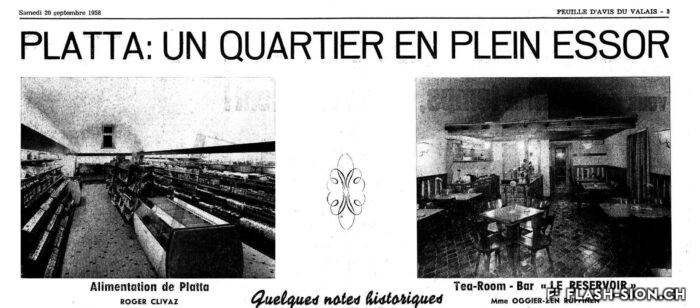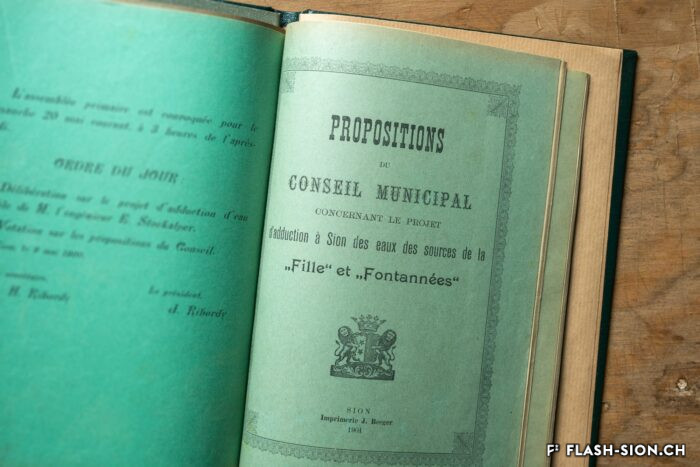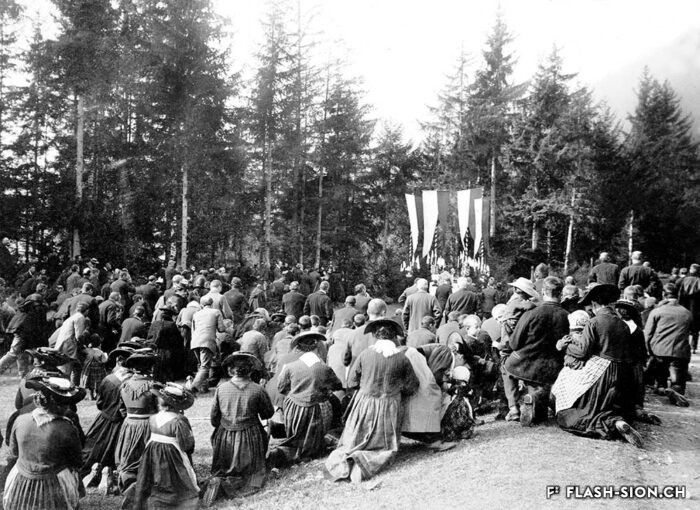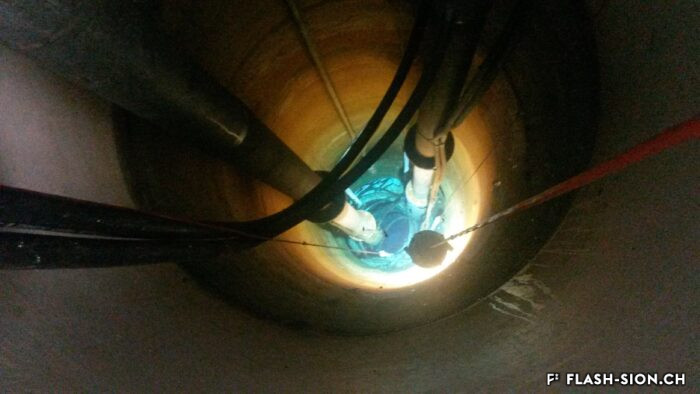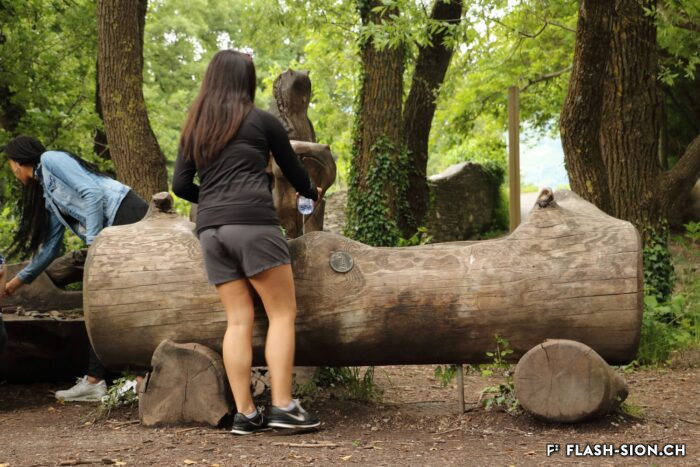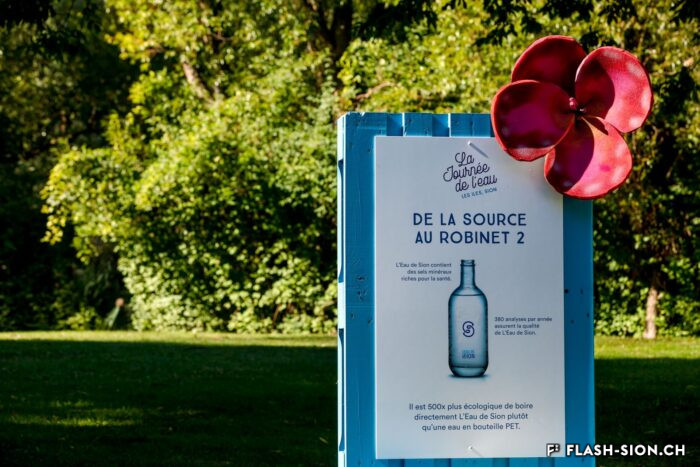De la source au robinet
A la fin du 19e siècle, les multiples réclamations quant à la qualité et à la quantité de l’eau potable des fontaines forcent la Municipalité à réagir. En 1895, elle confie l’exécution d’un réseau d’eau potable relié à un grand réservoir à Platta à l’entreprise Dumont&fils. Cependant, les installations mises en service dès 1897, se révèlent non-conformes à plusieurs titres. Ainsi, les autorités reconsidèrent le captage des sources de la Fille et des Fontannées inauguré en 1901. Depuis, l’augmentation constante de la consommation d’eau contraint les services industriels de la Ville à trouver sans relâche de nouvelles sources d’approvisionnement. Dès 1931, le puits de Sainte-Marguerite pare aux cas d’urgence et, en 1951 et 1964, le deuxième et troisième réservoir de Tourbillon sont mis en service. Aujourd’hui, la mise en valeur de cette ressource fragile et la sensibilisation de la population à une consommation responsable représentent plus que jamais les défis de demain.
Von der Quelle zum Wasserhahn
Ende des 19. Jahrhunderts zwingen zahlreiche Beschwerden, welche Qualität und Menge des Trinkwassers in den Brunnen bemängeln, die Stadtverwaltung zum Handeln. Letztere beauftragt 1895 das Unternehmen Dumont&Söhne mit der Planung einer zentralen Wasserversorgung, zu welcher ebenfalls das Reservoir in Platta zählt. Die 1897 in Betrieb genommene Anlage erweist sich jedoch von Anfang an und in verschiedenen Punkten als nicht konform. Die Fassung der Quellen «de la Fille» und «des Fontanées» wird daher durch die Stadtbehörden wiedererwägt und 1901 eingeweiht. Seither verpflichtet der stetig steigende Trinkwasserverbrauch die Stadtwerke, immer neue Wasserquellen zu erschliessen. Ab 1931 beugt das Grundwasserpumpwerk von Sainte-Marguerite Notsituationen vor, 1951 und 1964 werden das zweite und das dritte Reservoir in Tourbillon in Betrieb genommen. Heute stellen die Erschliessung dieser lebenswichtigen Ressource und die Sensibilisierung der Bevölkerung für einen verantwortungsvollen Verbrauch mehr denn je eine Herausforderung für die Zukunft dar.
From source to tap
At the end of the 19th century, the numerous complaints about the quality and quantity of the drinking water from the fountains forced the Municipality to react. In 1895, it appointed the Dumont&fils company to execute the construction of a drinking water network connected to a large reservoir in Platta. However, the installations put into service in 1897 proved to be non-compliant in several respects. Thus, the authorities reconsidered the catchment of the Fille and Fontannées springs, which were inaugurated in 1901. The constant increase in water consumption forced the city’s industrial services to find new sources of supply. From 1931, the Sainte-Marguerite well was used for emergencies and, in 1951 and 1964, the second and third Tourbillon reservoirs were put into service respectively. Today, the development of this fragile resource and the raising of public awareness about responsible consumption are more than ever the challenges of tomorrow.
Dalla sorgente al rubinetto
Alla fine del XIX secolo, le numerose lamentele per la qualità e la quantità dell’acqua potabile delle fontane costrinsero il comune a reagire. Nel 1895, affidò la costruzione di una rete di acqua potabile collegata a un grande serbatoio a Platta alla società Dumont&fils. Tuttavia, gli impianti messi in servizio nel 1897 si rivelarono non conformi sotto diversi aspetti. Le autorità quindi riconsiderarono il bacino di raccolta delle sorgenti Fille e Fontannées, inaugurate nel 1901. Da allora, il costante aumento del consumo di acqua ha costretto i servizi industriali della città a trovare nuove fonti di approvvigionamento. Dal 1931, il pozzo di Sainte-Marguerite fu utilizzato per le emergenze e, nel 1951 e nel 1964, furono messi in funzione il secondo e il terzo serbatoio di Tourbillon. Oggi, lo sviluppo di questa fragile risorsa e la sensibilizzazione della popolazione a un consumo responsabile sono più che mai le sfide del domani.
